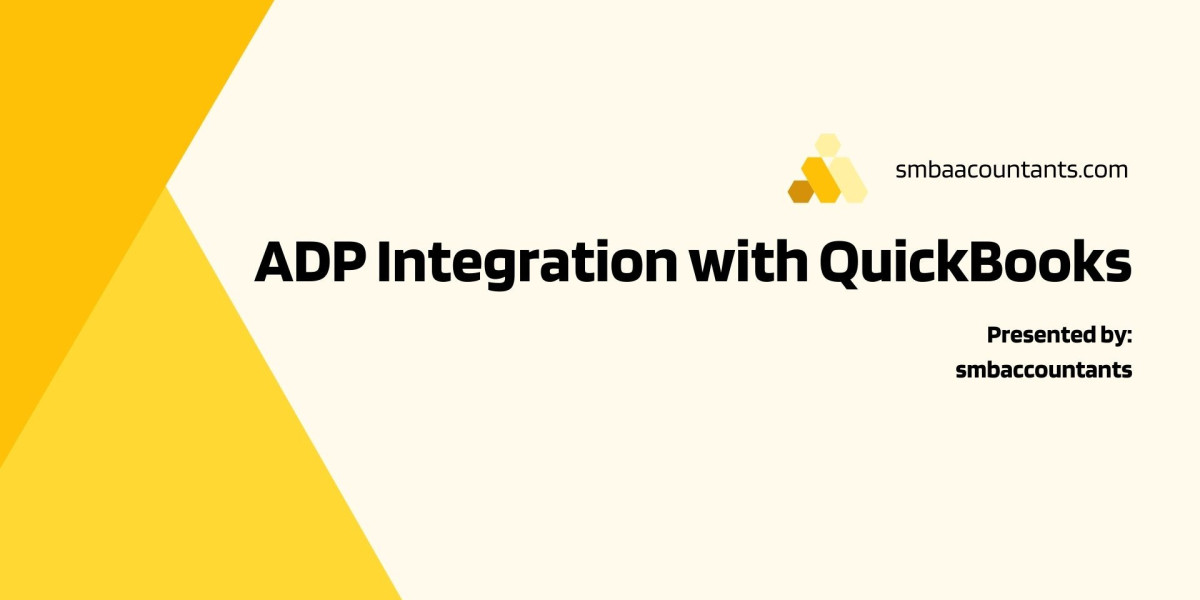Payroll processing is a critical function for businesses of all sizes, ensuring that employees are compensated accurately and on time. However, manual payroll processes can be cumbersome, time-consuming, and prone to errors, leading to inefficiencies and compliance issues. In today's digital age, integrating payroll solutions like ADP with accounting software such as QuickBooks offers a seamless approach to payroll management. This article explores the challenges faced in traditional payroll processes, the benefits of integrating ADP with QuickBooks, and provides a step-by-step guide to streamline payroll management effectively.
Introduction to Payroll Process and Challenges Faced
The payroll process involves various steps, including calculating employee wages, deducting taxes and benefits, processing payments, and maintaining accurate records. However, businesses often encounter several challenges in managing payroll:
- Complexity: Payroll processing involves intricate calculations, tax regulations, and compliance requirements, making it challenging to manage manually, especially for businesses with multiple employees and pay structures.
- Time-Consuming: Manual data entry and reconciliation tasks consume significant time and resources, diverting attention from core business activities and strategic initiatives.
- Errors and Compliance Risks: Manual payroll processes are prone to errors, such as incorrect calculations, missed deductions, and compliance issues, which can lead to financial losses and legal penalties.
- Lack of Integration: Siloed systems and disparate software solutions for payroll and accounting result in data duplication, inconsistencies, and inefficiencies in managing financial records.
Benefits of ADP Integration with QuickBooks
Integrating ADP with QuickBooks offers numerous benefits for businesses:
- Streamlined Processes: Integration automates data transfer between ADP and QuickBooks, eliminating manual entry and streamlining payroll processing.
- Accuracy and Compliance: Integrated payroll solutions ensure accurate calculations, tax withholdings, and compliance with regulatory requirements, reducing the risk of errors and penalties.
- Time and Cost Savings: Automation reduces the time and resources spent on payroll processing, allowing businesses to focus on strategic tasks and cost-effective operations.
- Real-Time Insights: Quick access to payroll data in QuickBooks enables businesses to generate timely reports, track expenses, and make informed decisions based on real-time financial information.
Step-by-Step Guide for Integrating ADP with QuickBooks
1. Setting Up the Integration:
- Log in to your ADP and QuickBooks accounts and navigate to the integration settings.
- Follow the prompts to connect ADP with QuickBooks, authorize data access, and grant necessary permissions.
2. Syncing Employee Information:
- Configure settings to sync employee data between ADP and QuickBooks, including employee profiles, wages, tax withholdings, and benefits.
- Verify that employee information is accurately transferred and updated in both ADP and QuickBooks.
3. Managing Payroll Runs:
- Set up payroll schedules and run payroll directly from QuickBooks, leveraging ADP data for accurate calculations.
- Review payroll reports and reconcile transactions to ensure accuracy and compliance with tax regulations.
Streamlining the Payroll Process with ADP and QuickBooks
Integrating ADP with QuickBooks streamlines the payroll process in several ways:
- Automated Data Transfer: Integration automates the transfer of payroll data between ADP and QuickBooks, eliminating manual entry and reducing the risk of errors.
- Real-Time Access to Data: Quick access to payroll data in QuickBooks enables businesses to track employee expenses, generate reports, and make informed decisions based on real-time financial insights.
- Reduction in Errors and Time Spent on Payroll Processing: Integration reduces errors, such as incorrect calculations and missed deductions, while also saving time and resources spent on manual payroll processing tasks.
Conclusion
Integrating ADP with QuickBooks offers businesses a streamlined approach to payroll management, enhancing efficiency, accuracy, and compliance. By following the step-by-step guide and leveraging the benefits of integration, companies can streamline payroll processes, reduce errors, and focus on strategic initiatives to drive growth and success. If you are facing a problem when you try to integrate, contact our integration experts at +1-800-961-4963 for comprehensive troubleshooting for ADP QuickBooks integration assistance. they will guide you to integrate ADP integration with QuickBooks.



